Blog
March 12th, 2015
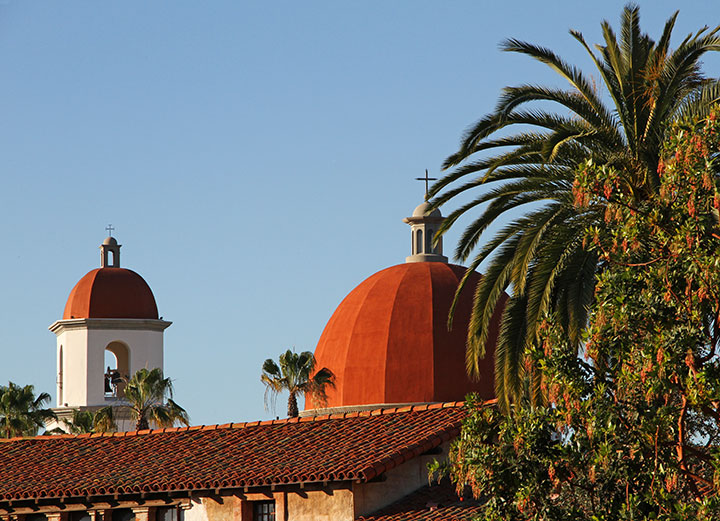
I just got back from over a month of traveling—first by way of a road trip to the bottom of California and back, and immediately afterward, a one-way Florida-to-Washington drive with a friend. In 33 days I logged well over 8,000 miles, and crossed several vastly different regions of the country. So even with the help of my trusty sketchbooks, my memories of the trip aren’t terribly linear. They’re more of a jumble of images flashing through my mind—so in that spirit, here is a similar jumble of images.



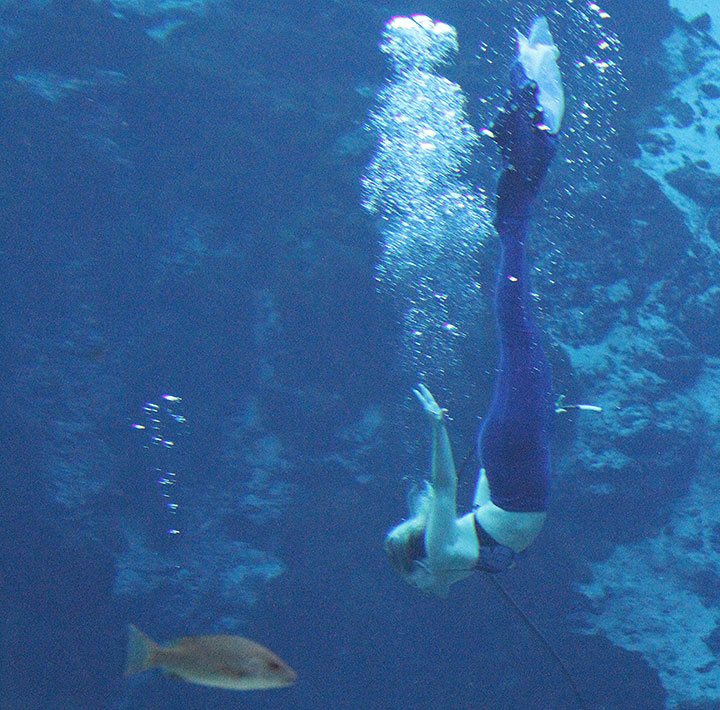
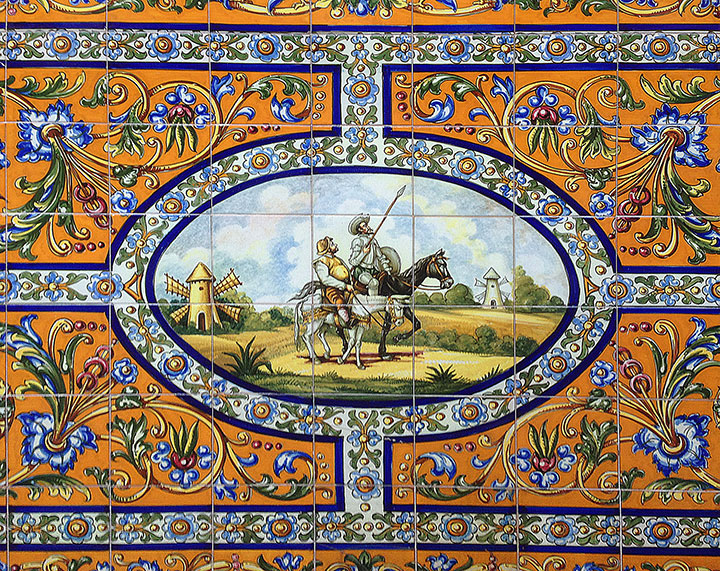
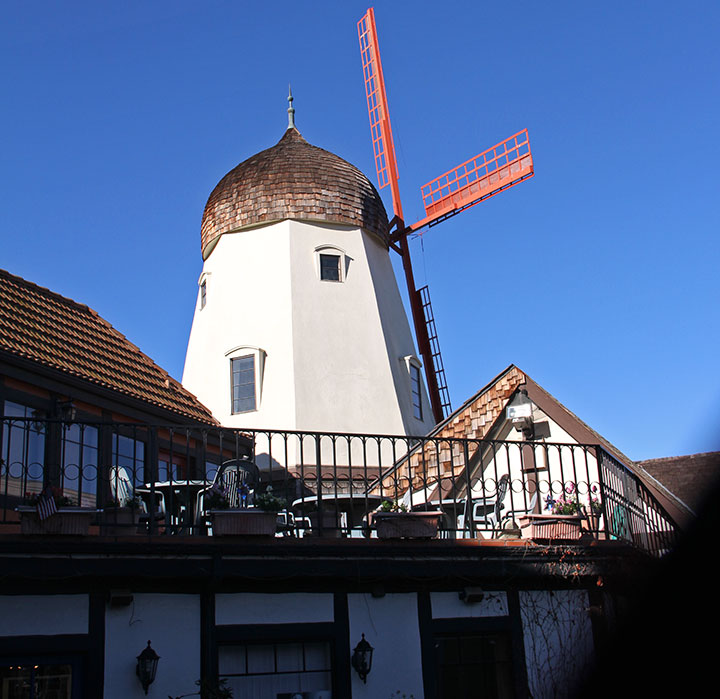
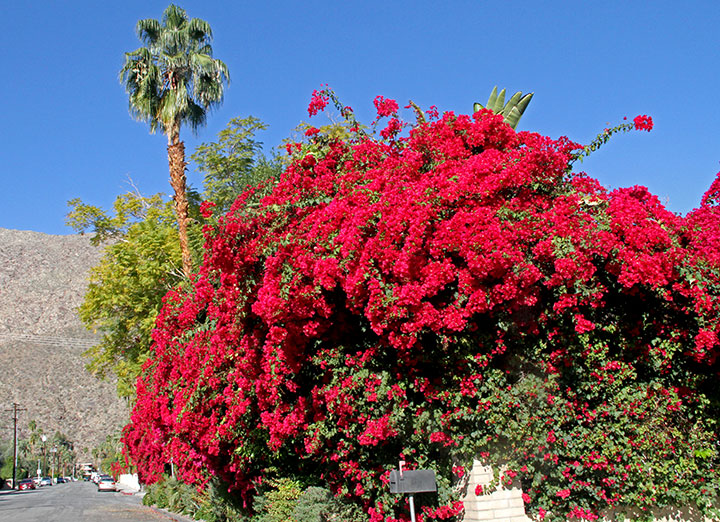
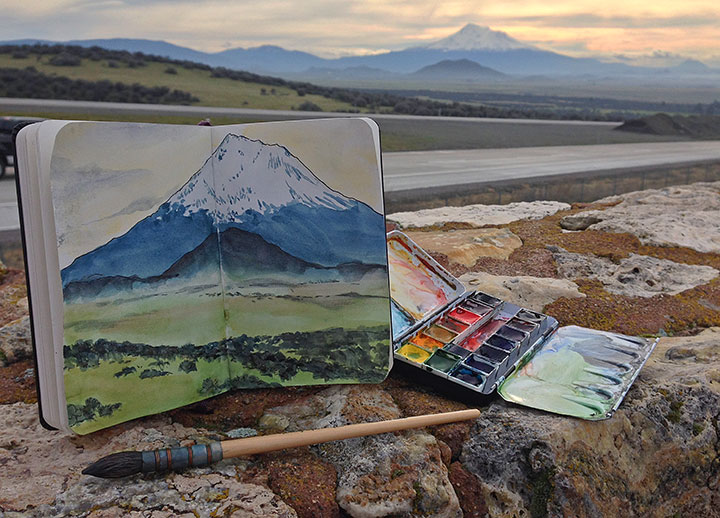

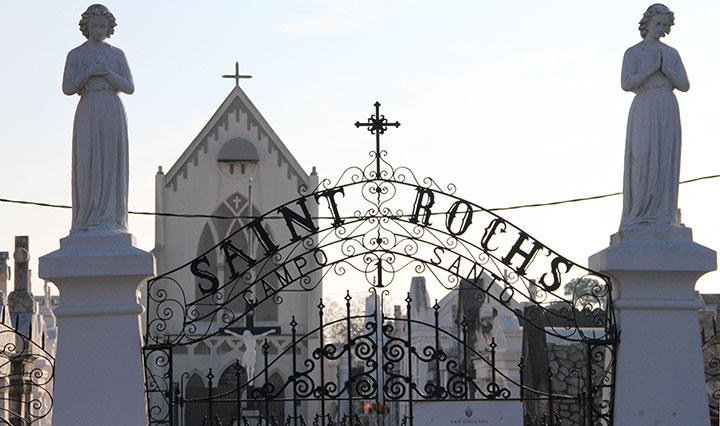
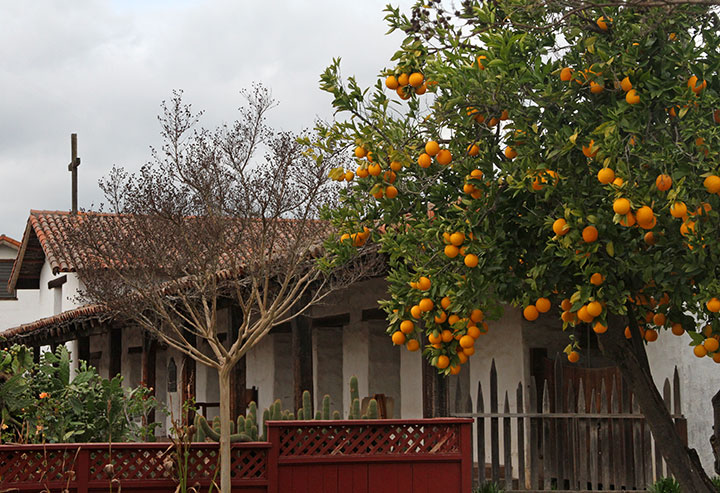

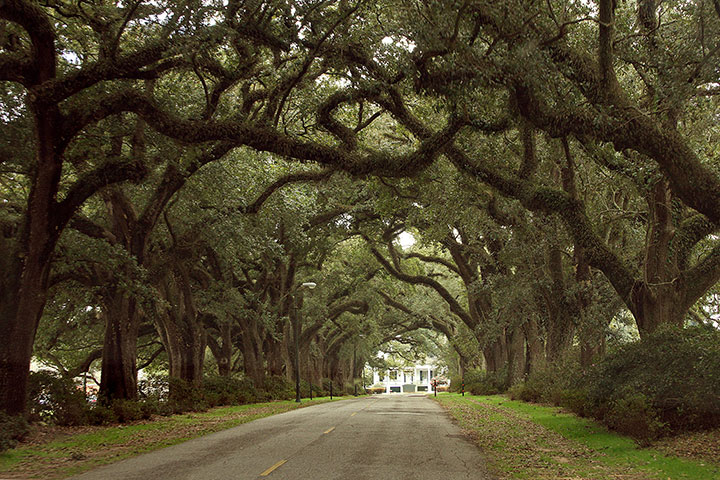
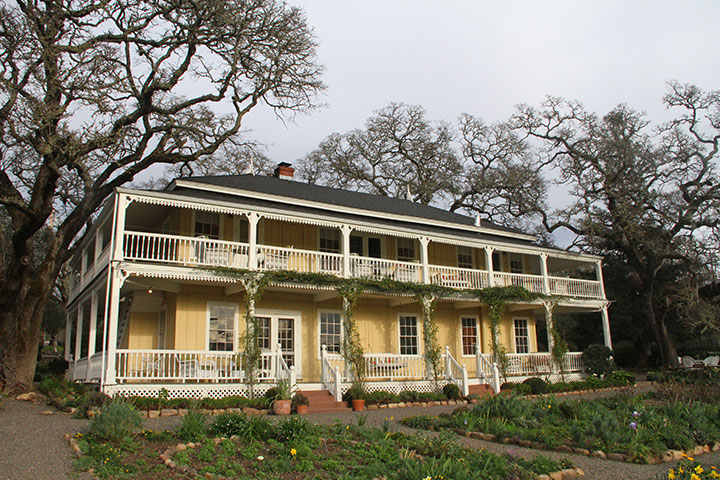
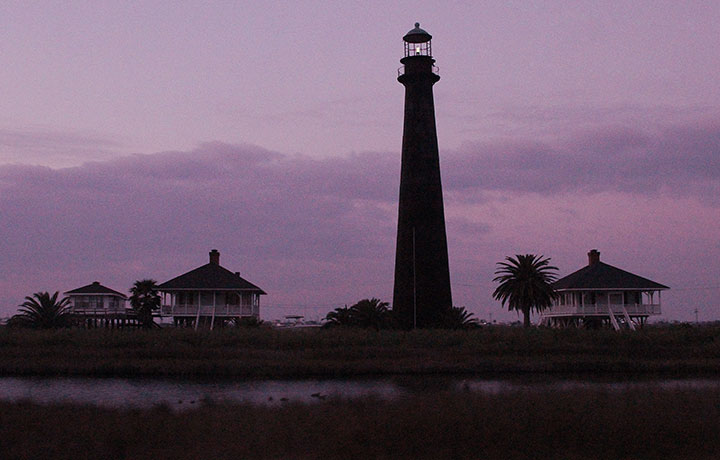
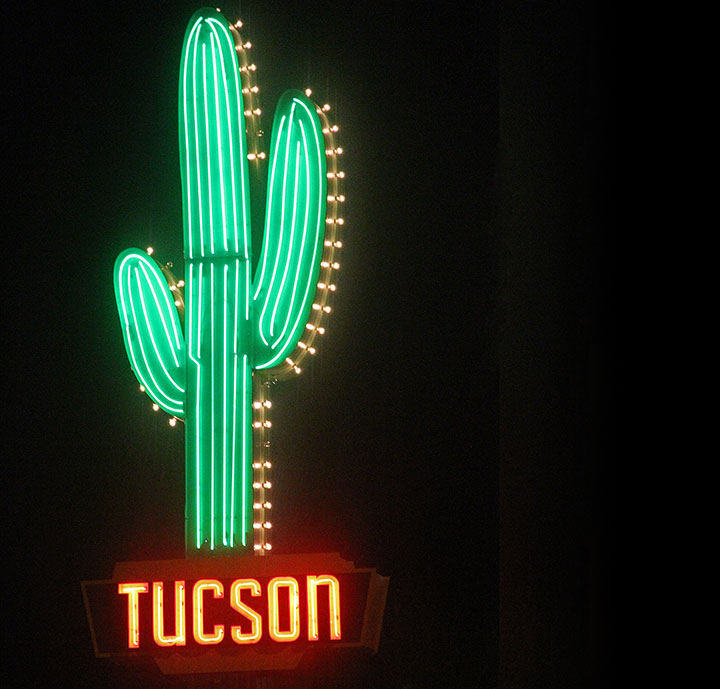
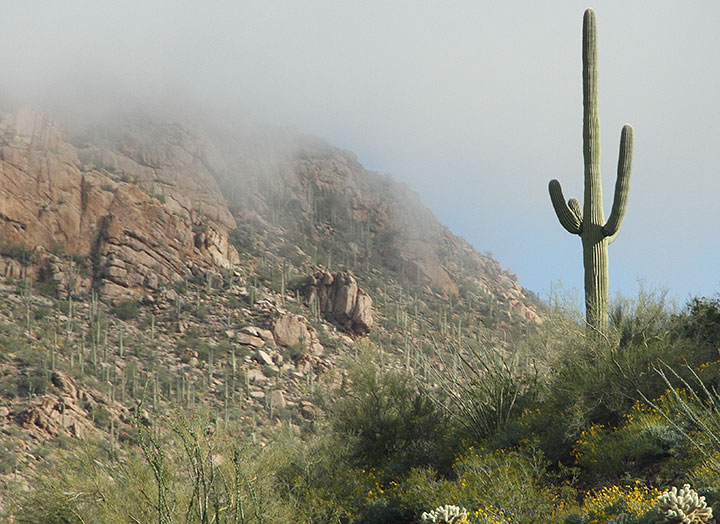
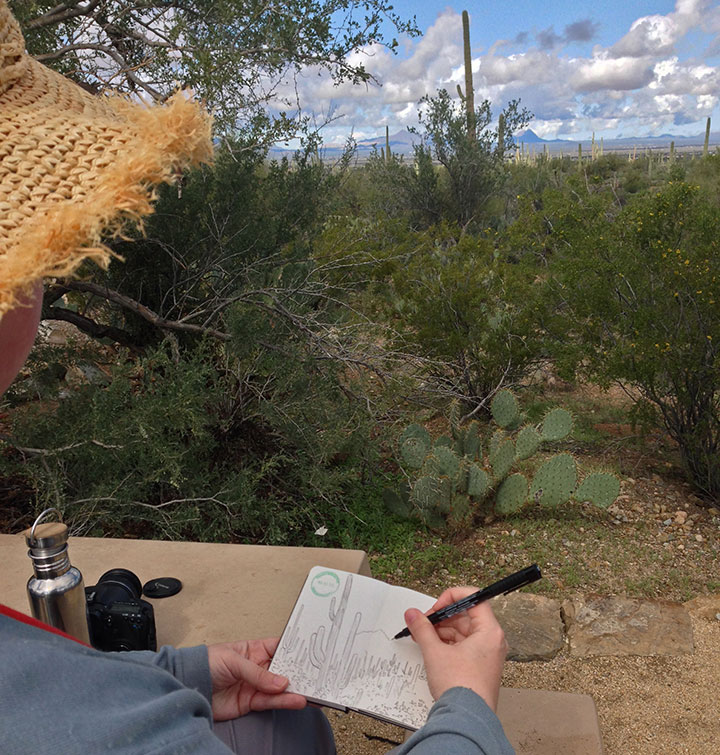
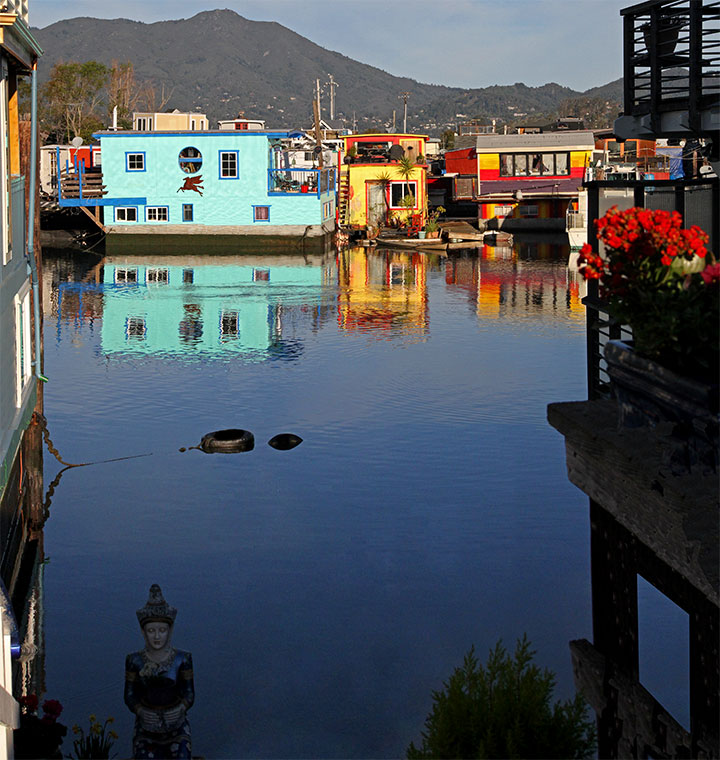
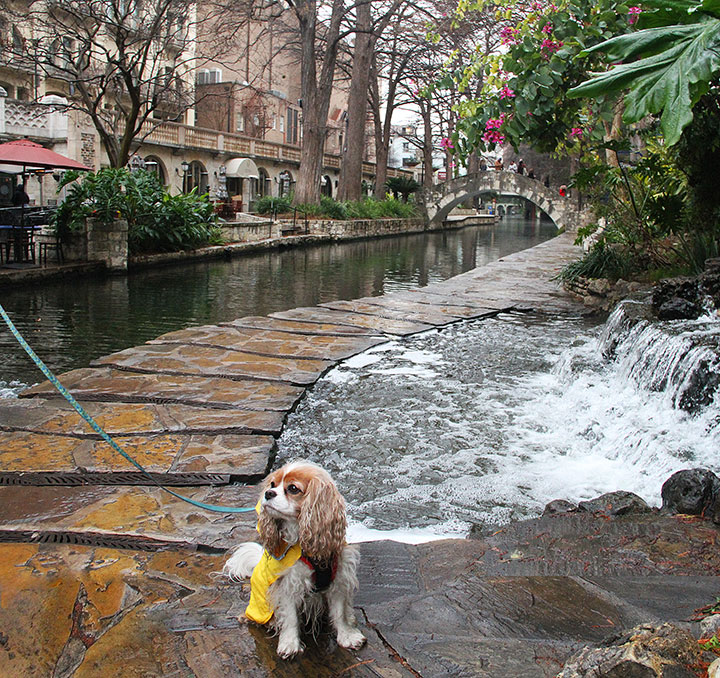

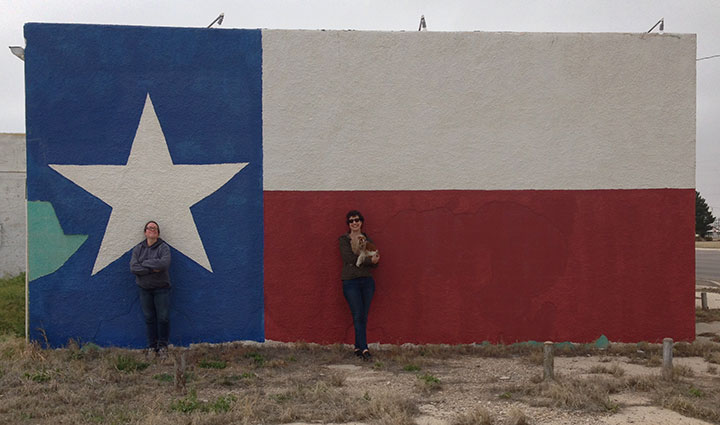

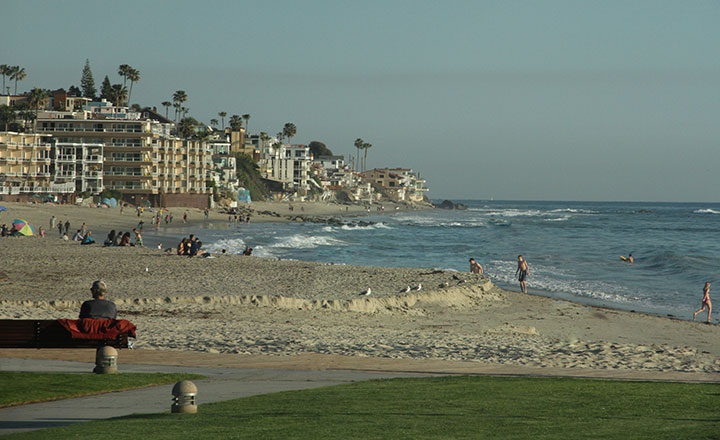
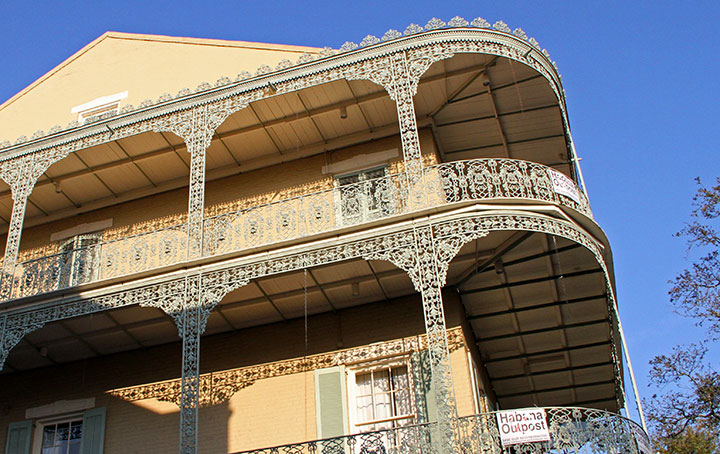
Now that I’m back in the studio, I’m trying hard to get my momentum back on my ongoing projects—and to suppress (for a little while, at least) the ideas that are coming as thick and fast as the images in my memory. We’ll see how long I last before some new project (or twelve) comes out of this trip…
February 3rd, 2015
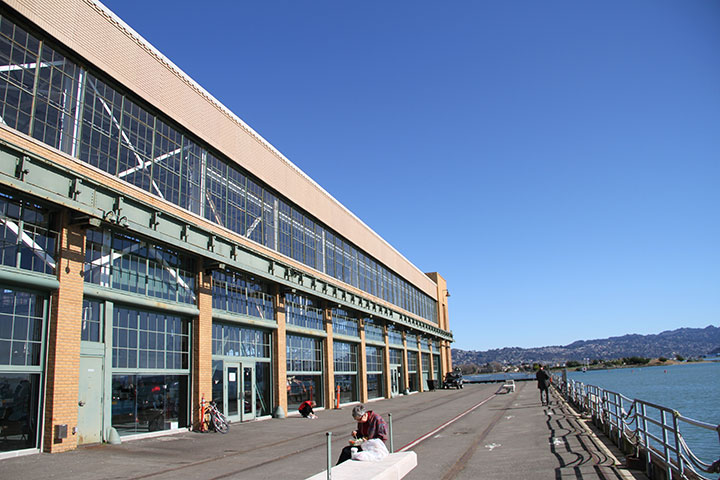
Well, I’m hitting the road again—I can’t believe it’s been two years already, but the CODEX Bookfair has come around again. Jessica and I will both be exhibiting, and we’ll have lots of new projects making their debut there (including the new Dead Feminist broadside!)
The best thing about CODEX is being able to stand in a room with hundreds of pieces of art—art that you can touch, while you have a conversation with the artist who made it. The event showcases the work of some of the best book artists, printmakers, paper artists and typographers working today—the result is an astounding display of artwork and ephemera from all over the world. So if you’re even remotely local, it’s well worth the trip.
You’ll find me at the Anagram Press table (#84)—so stop by and say hello!
Fifth CODEX International Bookfair
February 8-11, 2015
Craneway Pavilion, Richmond, CA
Open today and Tuesday 12:30 to 6; Wednesday 10 to 3
Admission: $10 per day ($5 students) or $30 for multi-day pass
February 12th, 2013
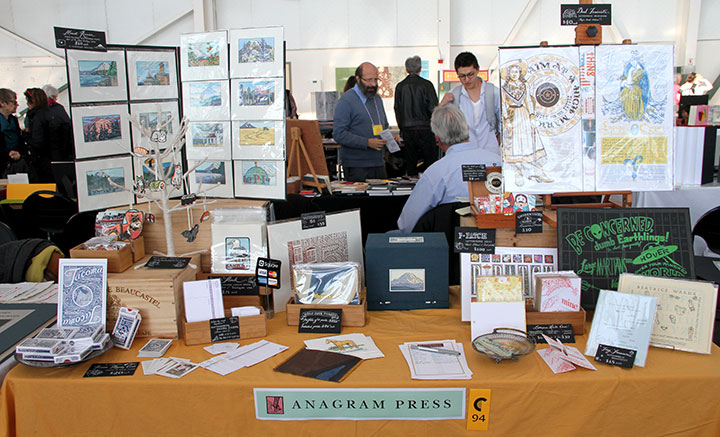
Right now I’m in California, manning my table at the Codex Book Fair. But I have to say, it’s a little hard to concentrate.
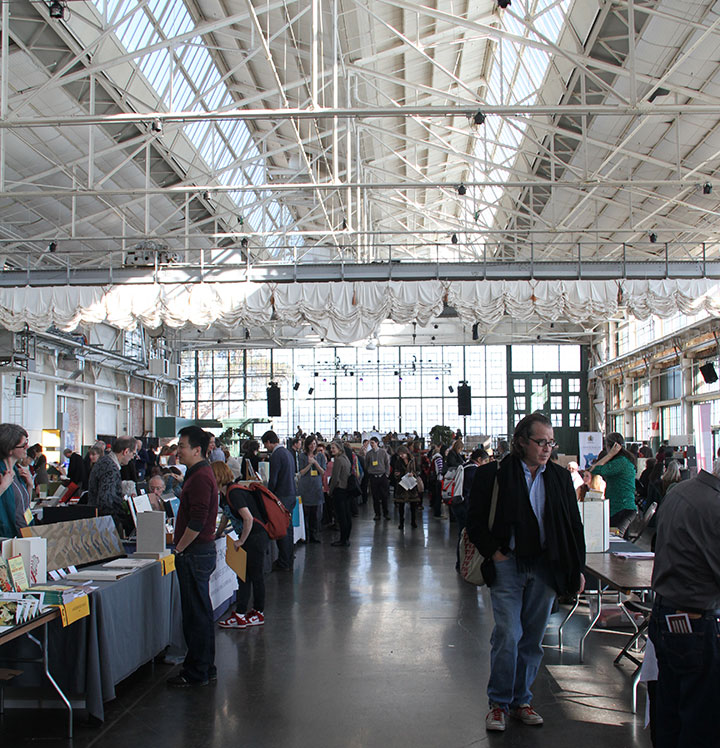
I mean, not only am I surrounded by incredible work by a couple hundred artists—but just look at this space! We’re in a new venue this year, and it is absolutely spectacular.
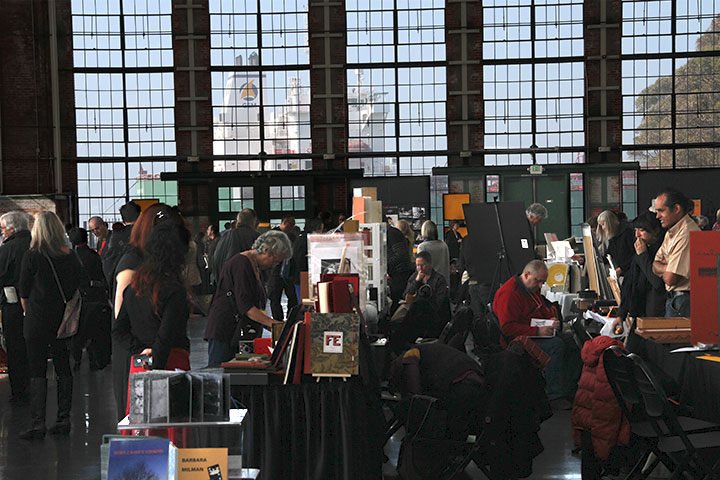
Plus, we’re literally right on the water (really—the pavilion sits right on a pier), so as if all the artwork here weren’t distraction enough, all anyone has to do is just gaze out the window.
Now, it’s a good thing my studio isn’t in a place like this—I don’t think I’d ever get any work done!
December 4th, 2011
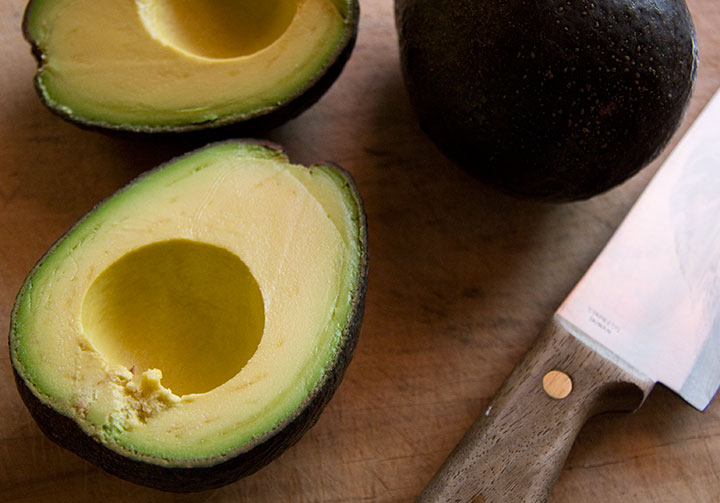
The Tailor and I were talking today about holiday traditions. In his family, it’s standard fare to find an orange in one’s stocking on Christmas morning. He’s originally from Kansas, where the tradition hearkens back to the days when citrus fruit was an exotic luxury. I remember my grandmother telling me a similar story about her childhood Christmases—she grew up on a farm in Nova Scotia, and an orange in the 1920s Maritimes must have been about as singular as it would have been in, say, Laura Ingalls’s stocking.
If you mostly subsist on local, seasonal produce, those old tales mean a lot more than they would otherwise. After all, all the Florida oranges and Chilean strawberries in the supermarket don’t matter much if you choose not to partake of them. So today, when I cut into the huge, beautiful avocados Sarah and Jesse had brought with them from California when they came for Thanksgiving, I think I knew how Nana, and the Tailor’s ancestors, and Laura Ingalls must have felt all those years ago. Jesse bought them green, directly from the farmer, so they’d have time to ripen for us here. Sarah wrapped each fruit individually in paper, and packed them carefully in a tin. And then together they journeyed for two days to give them to us in person. I can’t think of a more precious gift than that.
We’re just finishing up our Christmas lists this weekend, and planning the final round of gift shopping. I know the Tailor will be expecting the annual orange in his stocking, just for tradition’s sake. So maybe I’ll ask Santa for an avocado in mine.
October 17th, 2011
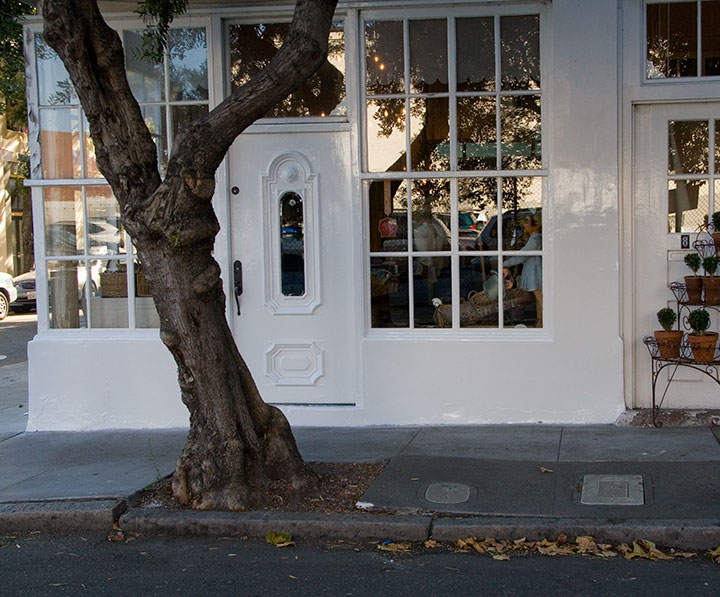
You already know that I have a thing for hidden, quiet spaces tucked away within large cities. So imagine my delight when Jessica turned me onto this place.
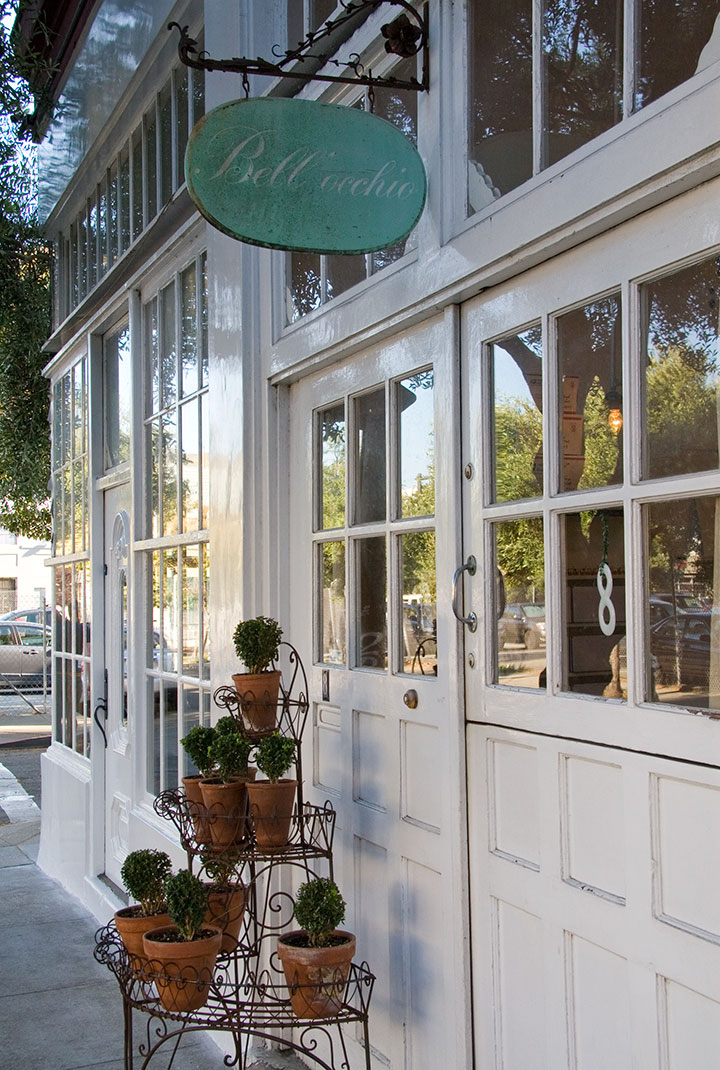
Bell’occhio has quickly become my favorite (and most regularly visited) haunt in San Francisco. It’s easy to miss—it’s just a few steps off of the main drag of Market Street, but the little lane upon which it’s situated is so quiet that it seems transplanted from a different era.
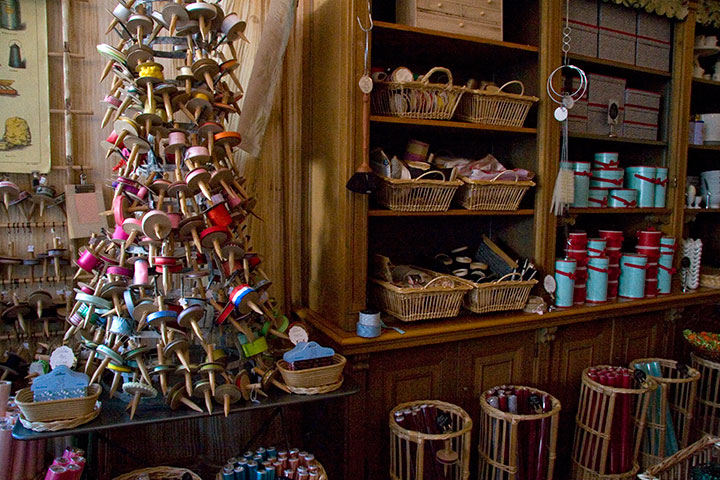
The feeling doubles as soon as you step foot inside the shop. The place is a living, breathing Kunstkammer, with all manner of beautiful odds and ends you never knew you so desperately needed.
My favorite part, though, is the overall presentation. All her inventory is kept in baskets, drawers and wooden cabinets, like a Victorian general store. Each price tag is hand-calligraphed in flowing script. And whenever you purchase something (and I just dare you to visit and not buy something!), your items are packed in vellum envelopes and muslin drawstring bags. Which just about makes me swoon.
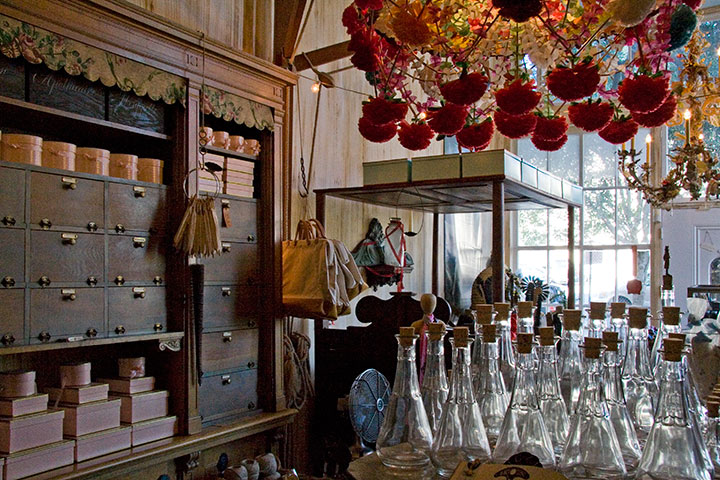
The owner, Claudia Schwartz, was very kind to let me take a few photos and spread the word about the place. She opened Bell’occhio in 1988, but now that this sort of aesthetic is all the rage again, I’m sure she runs a huge risk of having her ideas lifted by copycats. Ever walk into an Anthropologie? I’m pretty sure they stole their whole schtick from her. So Claudia, thank you for allowing me to share your world.

Now, whenever I return to San Francisco, I have a separate Bell’occhio budget—as crazy as that sounds. It’s the one recommendation I can offer if you’re going to come here. Otherwise, this place will have you impulse-buying before you can say, “I’ll take three of those!”
October 14th, 2011
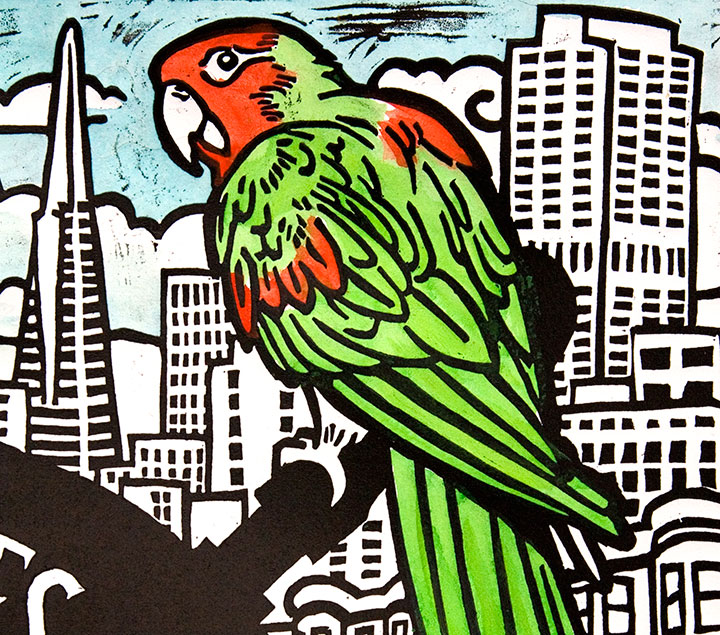
Since I’ve had parrots on the brain for so long, I thought it would make a fitting end to my San Francisco trip to go in search of them. You see, according to legend documented fact, San Francisco has a wild population of feral parrots—if that isn’t nautically themed, I don’t know what is. Yarr!
I’d been told, however, that while popular culture has named them “the parrots of Telegraph Hill,” they didn’t actually spend much time there—so we had no idea where to look for them.
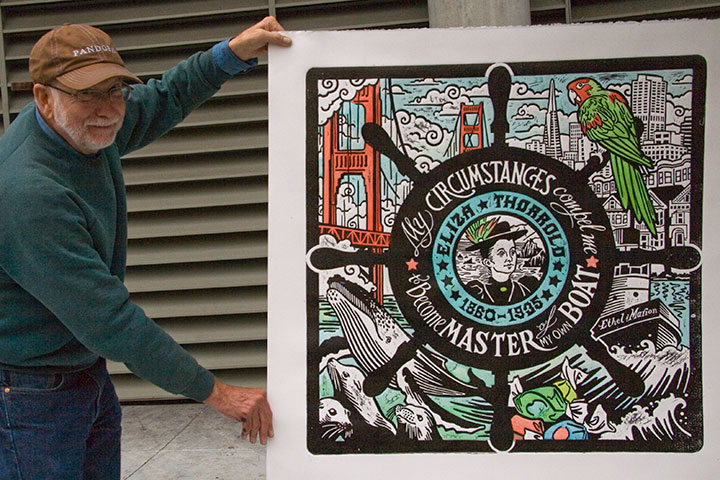
Jessica’s uncle David (pictured here with our print!), who’s lived in SF for decades, came to the rescue. He told me that actually, Telegraph Hill was a good place to look on Sunday mornings in September, and even if I didn’t find any birds, it made for a nice wooded walk.
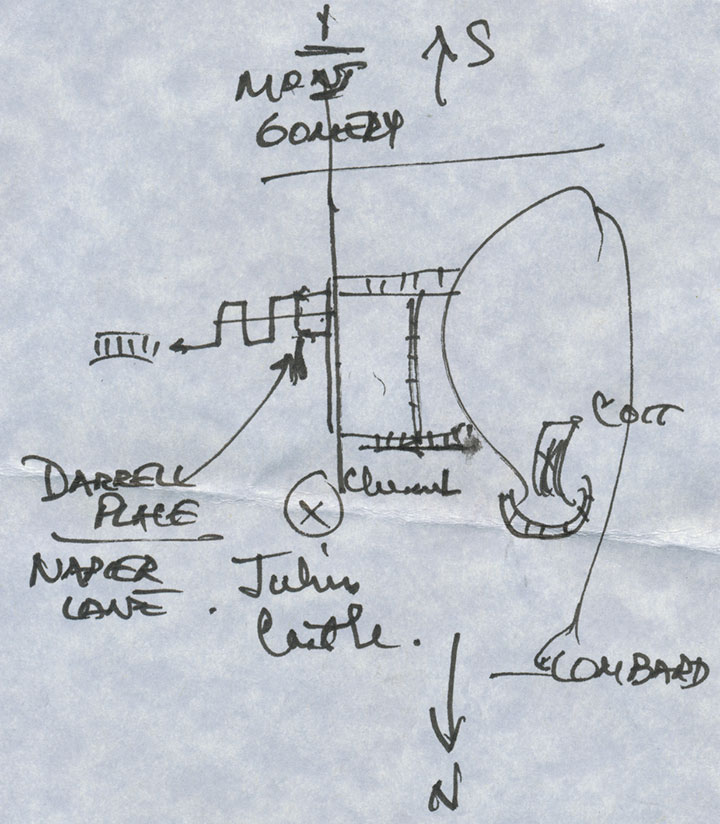
He even scribbled a little map to show me a likely spot. Somehow, that little gesture made the whole thing a hundred times more exciting—I tend to explore cities without atlases or guides (or Googles) anyway, so this little scrap of paper turned a morning hike into a treasure hunt.
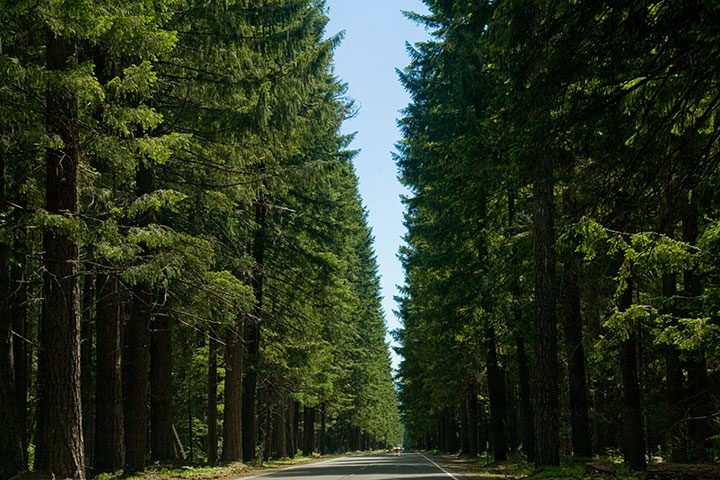
Now, I’m not sure exactly what I was expecting, but I’m a northern gal, so when somebody suggests walking through the woods, this is what pops into my head.
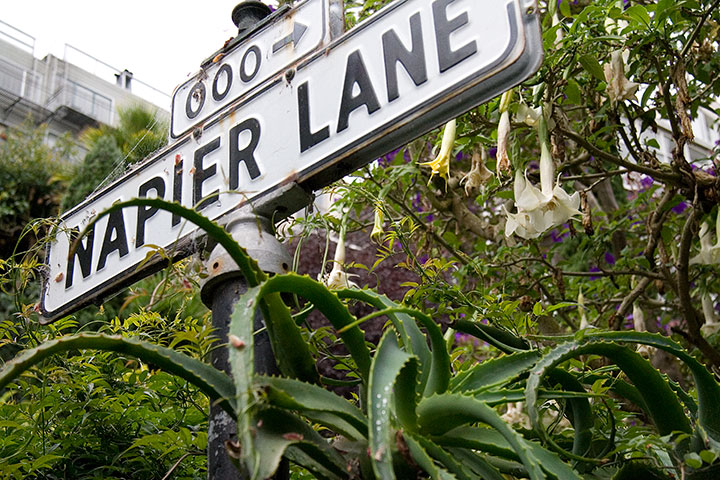
This, on the other hand, was a surprise.
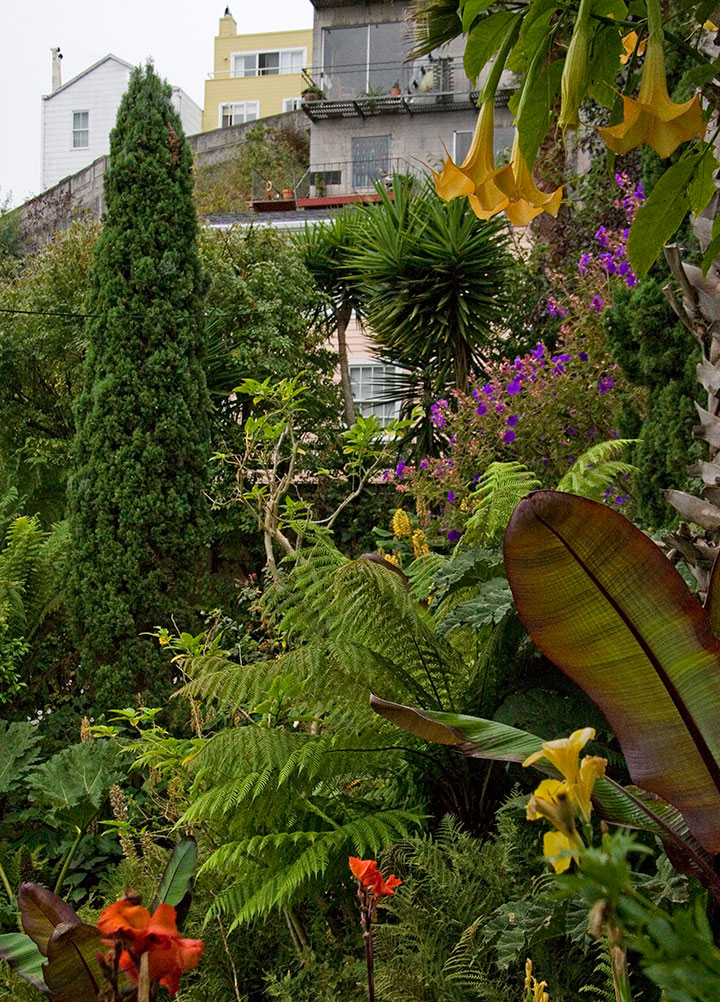
Compared to the mossy pines and cedars in my frame of reference, Telegraph Hill felt like a tropical jungle.
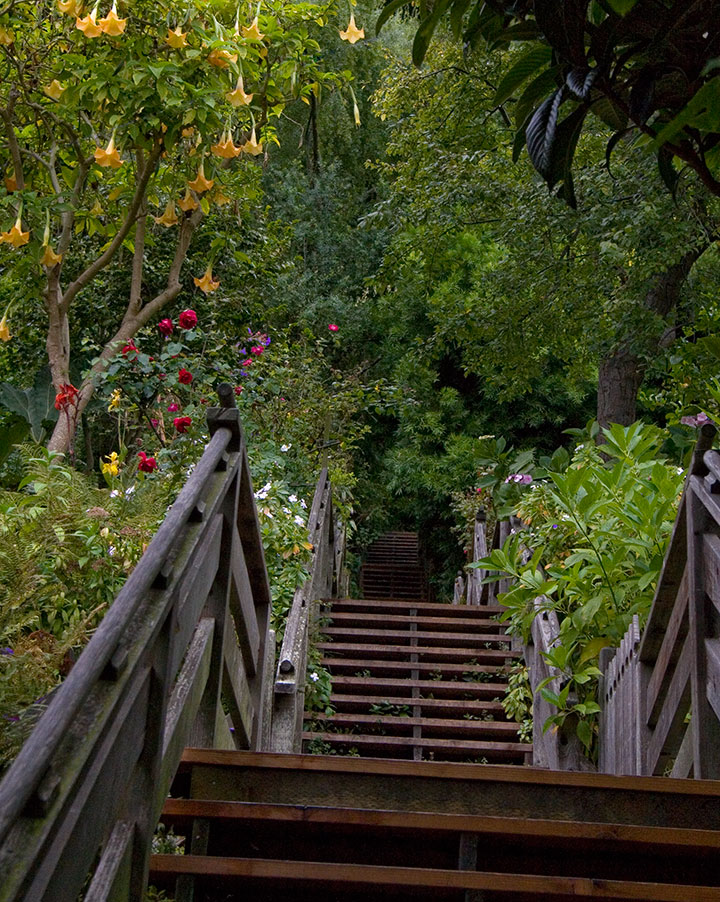
My friends and I had the place almost entirely to ourselves—it was a dark, dreary day, which discouraged all the sun-lovers. So as we wound our way up the steps, it felt like we’d stumbled upon our own private garden, or maybe a path to some other world.
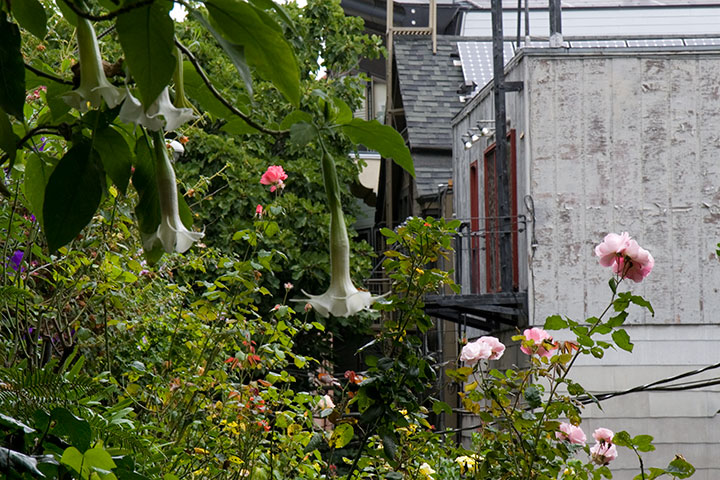
It was easy to forget that we were in the heart of a densely packed city (in California, no less)—this felt more like a secret, slightly English enclave through which we’d been granted safe passage.
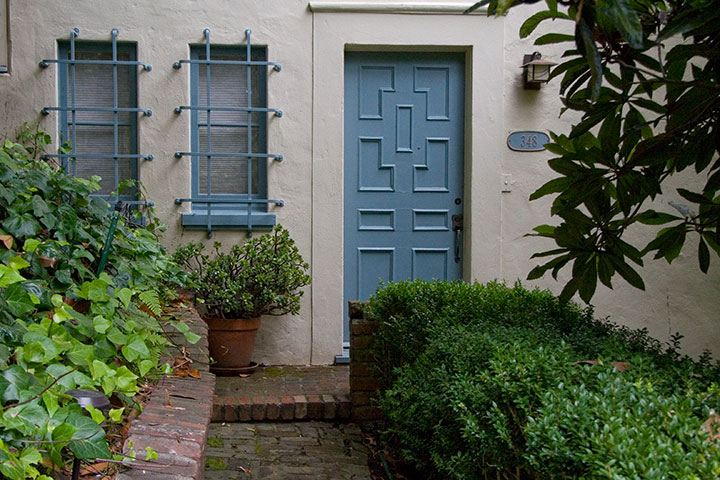
Around every bend was a door, or a courtyard, or another track. Each felt like a gateway to something else, to maybe more and more and more worlds beyond our little slice of perception. It was a hint that what we could see was just the beginning—that what we couldn’t see was out of reach, and all the more tempting for it.
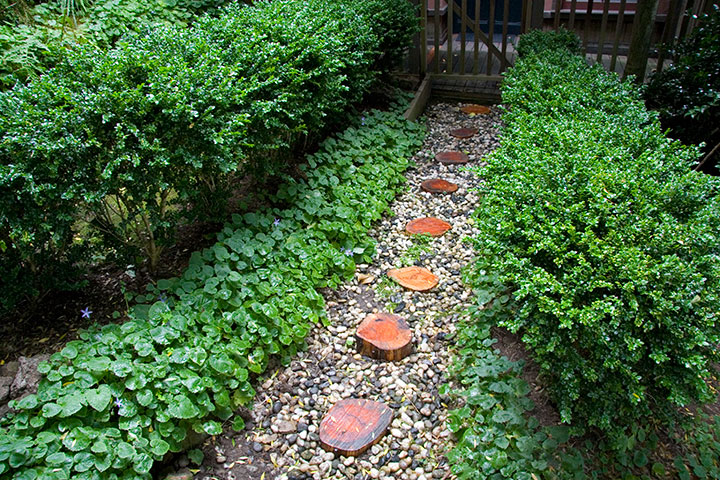
That sort of feeling is just my cup of tea, you know?
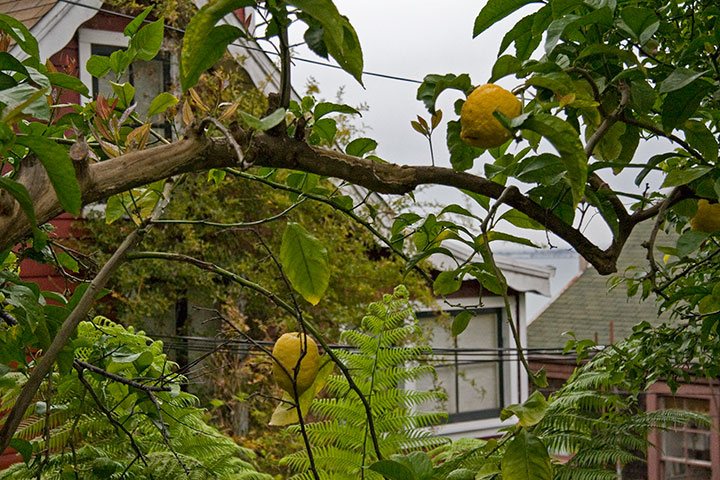
Every time that pleasant disorientation threatened to overwhelm me, though, out popped little hints of where I really was.
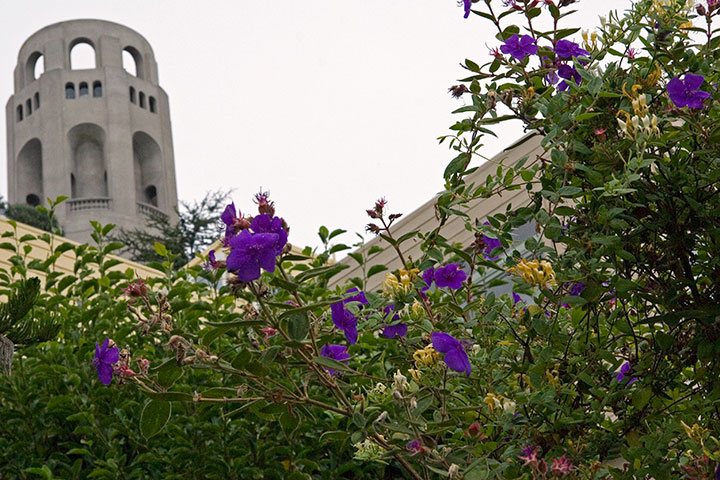
And whenever the trees gave way to open sky, guide posts appeared, showing us the way back—
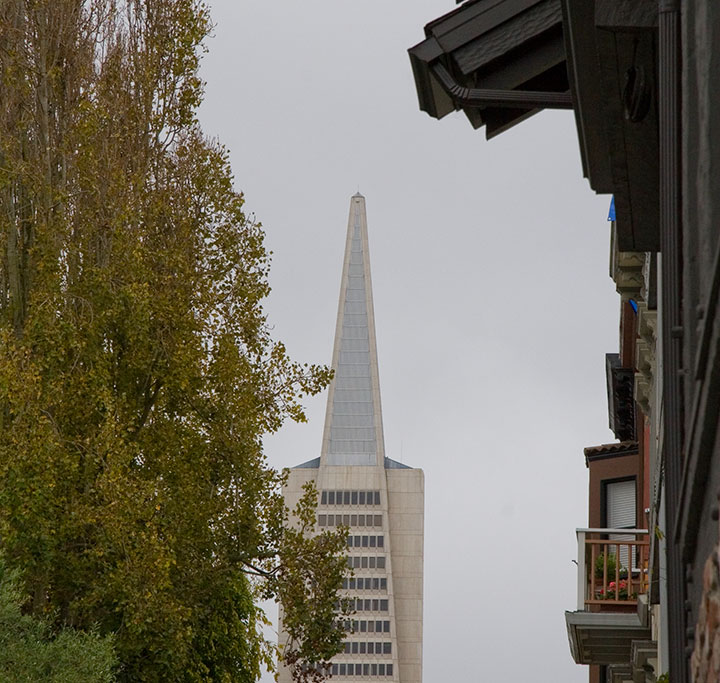
and reminding us that reality was a stone’s throw away.
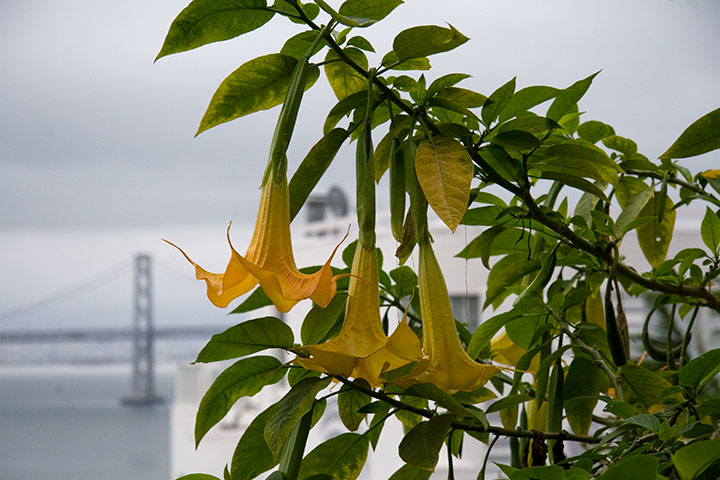
I almost forgot that we were even looking for parrots.
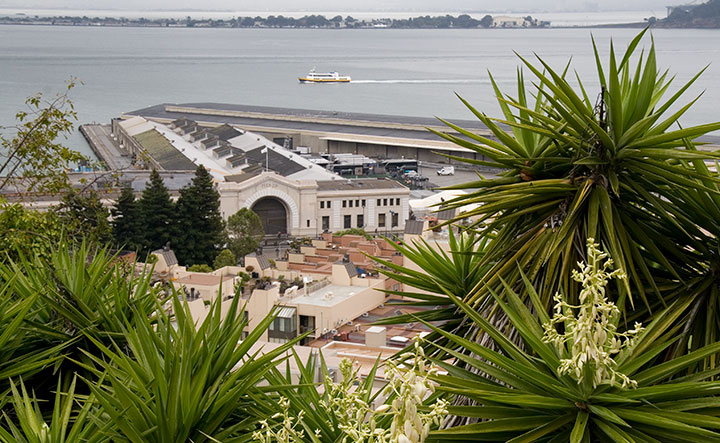
At the top of the hill, we heard a telltale squawking. I glanced up to catch a quick glimpse of two green birds with long tailfeathers speeding away to the west—unfortunately, my shutter finger wasn’t fast enough on the draw.
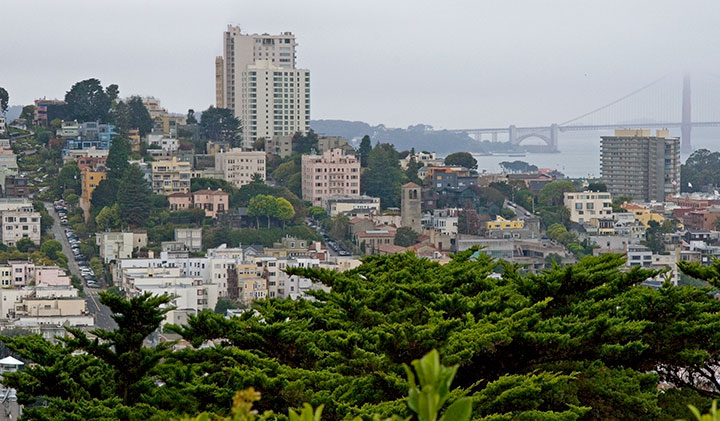
It’s like a ‘Where’s Waldo’ of SF—can you spot Lombard Street? The Golden Gate?
Oh, well. The view alone was the perfect end to the walk.
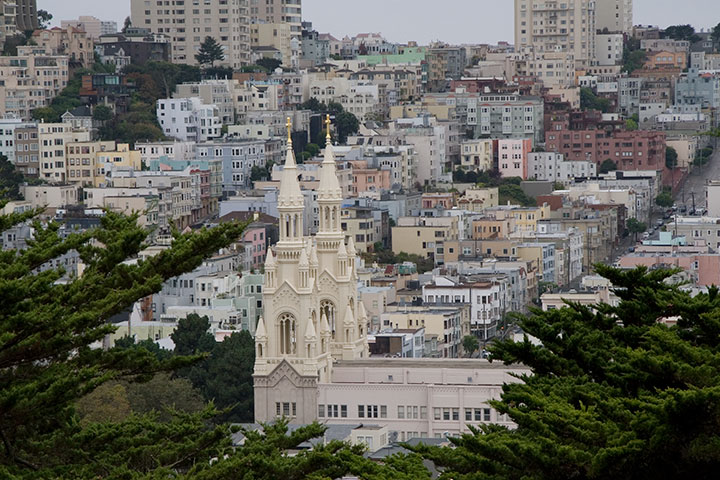
The vista of pastel stucco seemed like a gift, a reward at the end of an uncertain journey. It reminded me of what I love most about the place: that the city itself is like a garden of color—an urban forest in bloom.
* * *
Thank you so much for the amazing response you’ve had to the Apocalypse Calendar! Literally overnight you’ve helped us raise over $1000. We have until the clock strikes midnight on Halloween to reach our goal—thank you for helping us get there!
October 1st, 2011
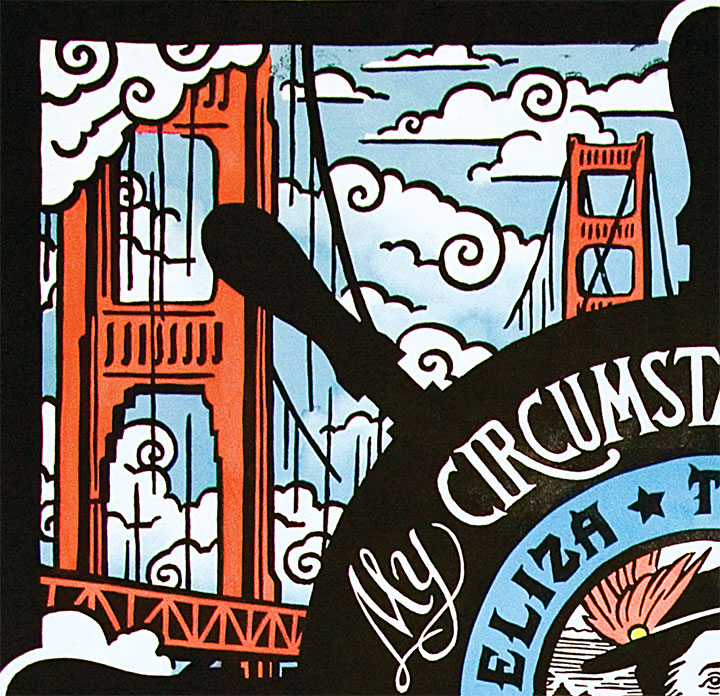
It’s hard to think of a better weekend activity than taking a quick trip to San Francisco.
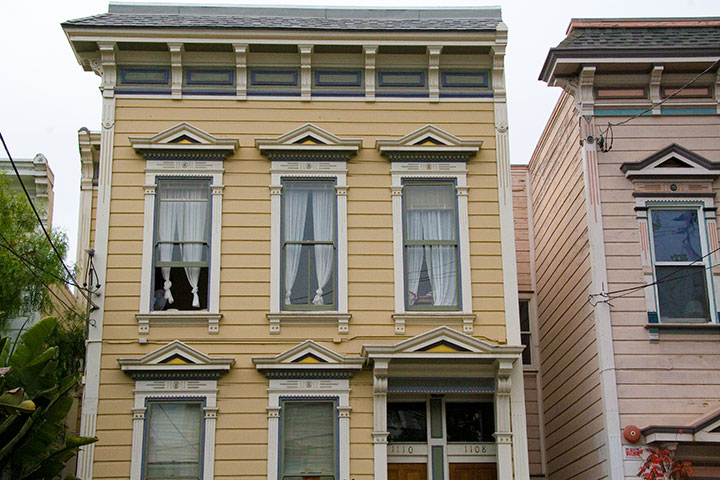
First of all, Jessica and I got to visit the lovely Sarah and Jesse, who live here—
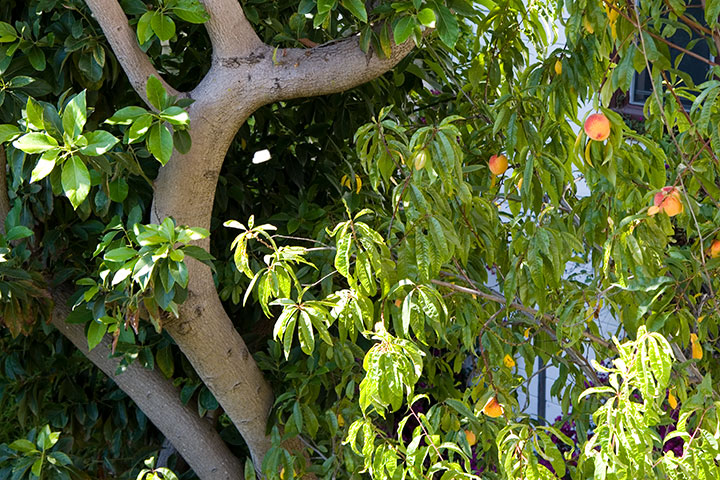
and whose back yard contains this.
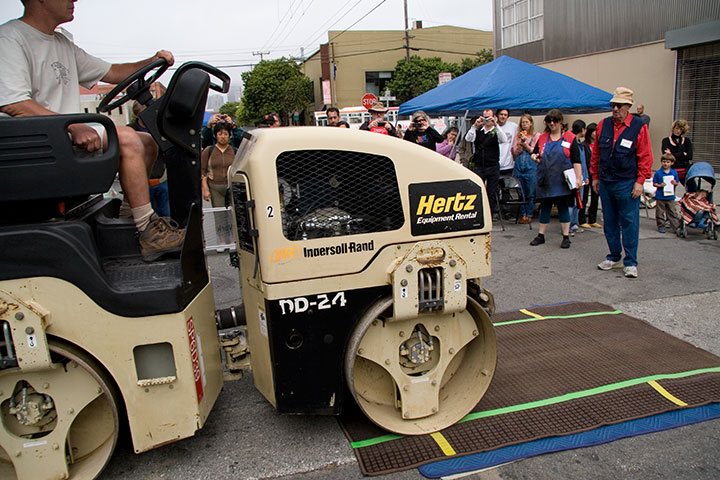
And then we got to raise a fantastic ruckus and make guerrilla street art with a whole bunch of people looking on.
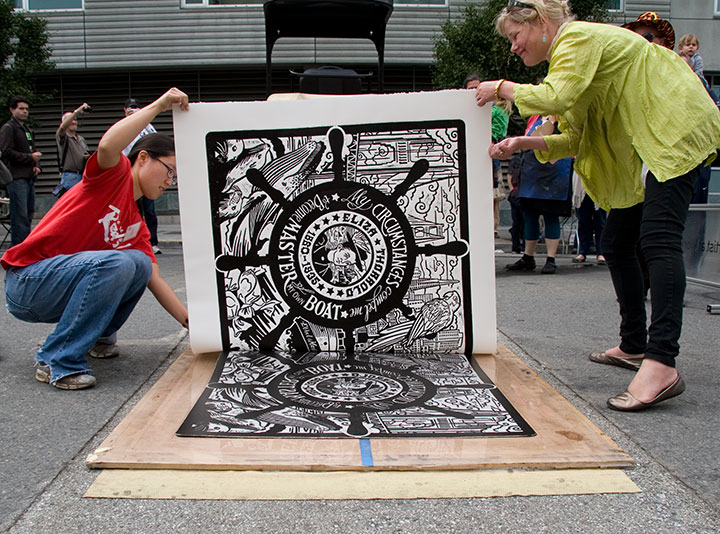
SFCB’s got this thing down to a science. Between the small army of volunteers who took care of the inking and registration (line-up),

and their probably-patented methods for keeping street schmutz off the prints, the results were impressive. In fact, this is my fourth steamroller print (and Jessica’s fifth), and I’ve never seen one turn out this well before.
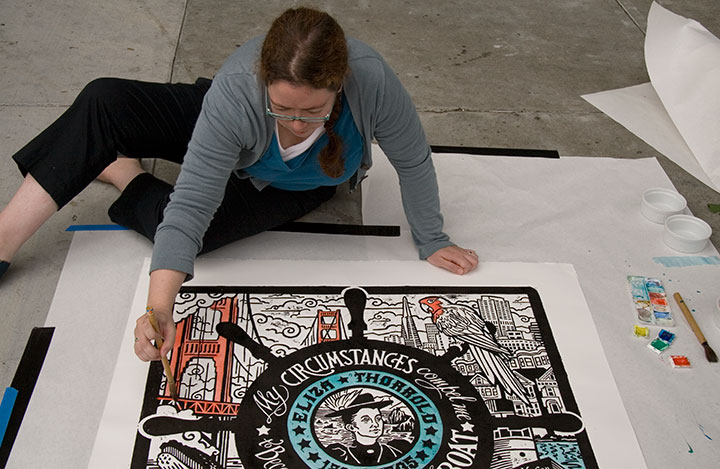
Photos of us by Jesse Mullan
Besides, we really needed to keep our hands clean this time, because we upped our personal ante and just plunked ourselves down on the sidewalk for a bit of on-the-fly hand-coloring (though avoiding the very wet ink felt kind of like playing Twister).
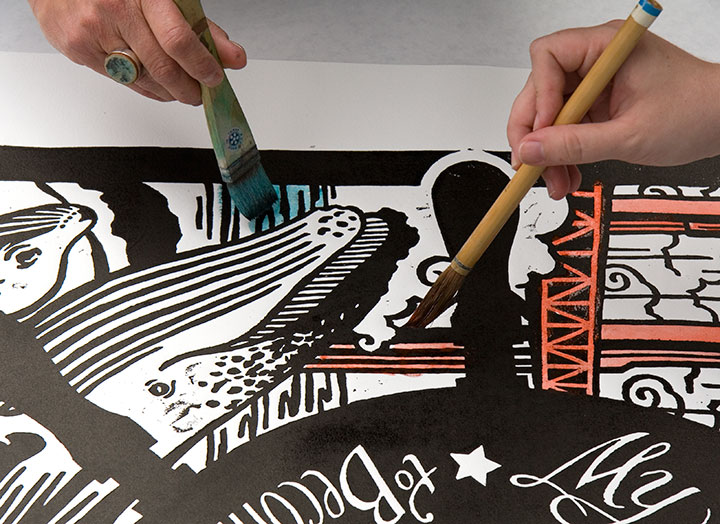
That turned out to be the perfect tag-team job, actually. I do a lot of hand-coloring when I print, as you know, but never anything this big—
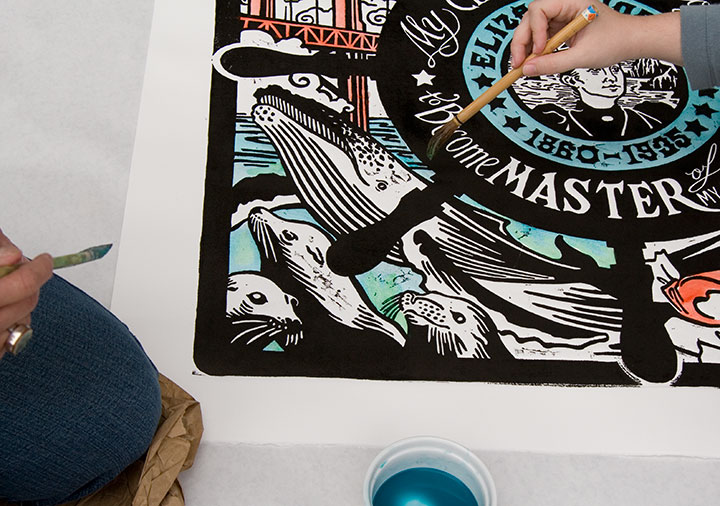
having two sets of hands to blend colors and two sets of eyes to look for missed spots was definitely the way to go.

So thar she blows. Let me introduce you to Eliza Thorrold, and our latest honorary Dead Feminist print, Even Keel. Eliza was the first licensed female tugboat master on San Francisco Bay. After Charles, her husband who piloted the Ethel & Marion before her, died an untimely death, she fought for and received her operator’s license to continue their tug business in his stead and provide for her family. Her quote says it all: “My circumstances compel me to become master of my own boat.” Hear, hear, Eliza.
After she left the high seas and entered retirement as a landlubber, she became master of her own taffy pull by opening a successful ice cream and candy shop with her son. Hence all that salt water taffy. And as if the nautical sweet-shop theme weren’t enough, we couldn’t resist throwing in all our favorite things about San Francisco. So go hunting around the image, and see what you turn up. Then, on your next trip to the City by the Bay, learn more about Eliza’s life (and those of other women mariners) at San Francisco Maritime National Historical Park.
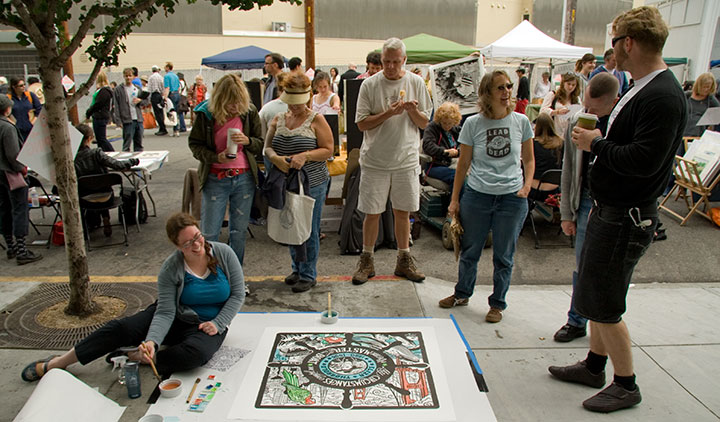
So, yeah. It might not fit the traditional idea of a productive weekend, but it’ll do. We came away with new friends, blue fingertips and a whole lot of ideas to make our own humble little steamroller party better.
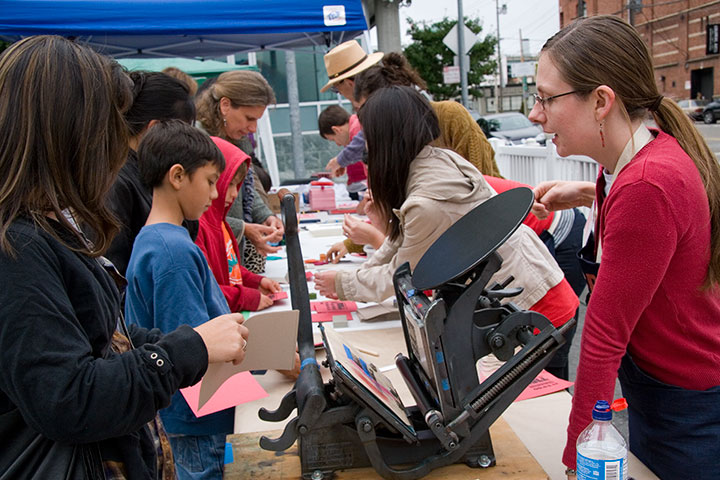
Many thanks to all the staff and volunteers of the San Francisco Center for the Book, who made the day a smashing success—
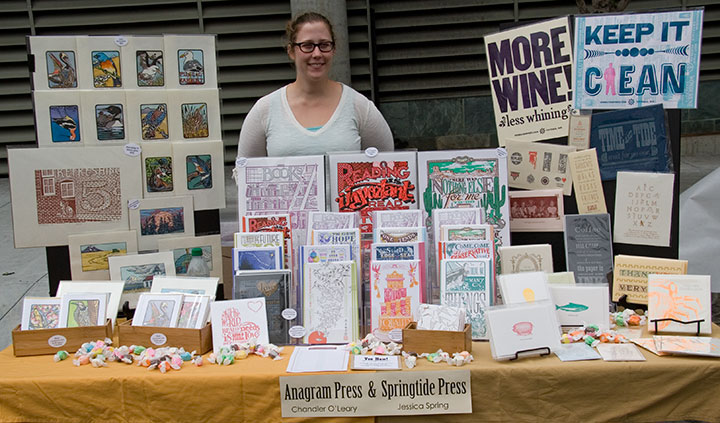
and to all the kindred spirits who lent a whole bunch of helping hands. Like the super-nice TSA employee who took such great care of our linoleum block and didn’t bat an eye that we had to bring something so huge and bizarre onto an airplane. Like Sarah, who manned our table; and Jesse, who shot most of the photos; and the huge, huggable posse of Jessica’s extended family, who helped schlep things and kept us company and bought us beignets. And especially Jessica’s ten-year-old niece, Luciana, who basically designed our table arrangement. ‘Ciani, you’re one awesome ragazza.
And of course, to Eliza—thanks for standing proud at the helm.
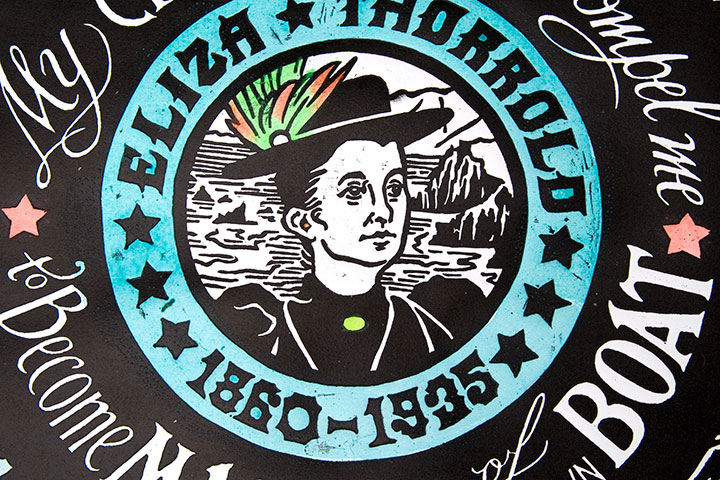
September 22nd, 2011
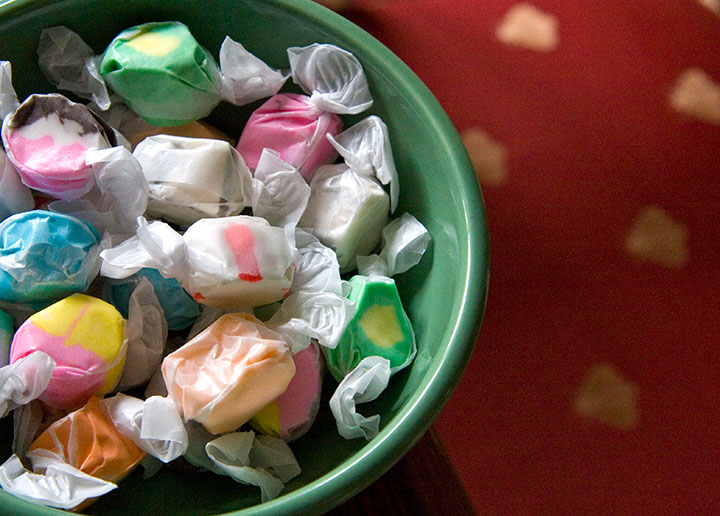
Splurging on a giant bag of salt water taffy is probably a weird way to research a new project, but I swear it’s relevant.
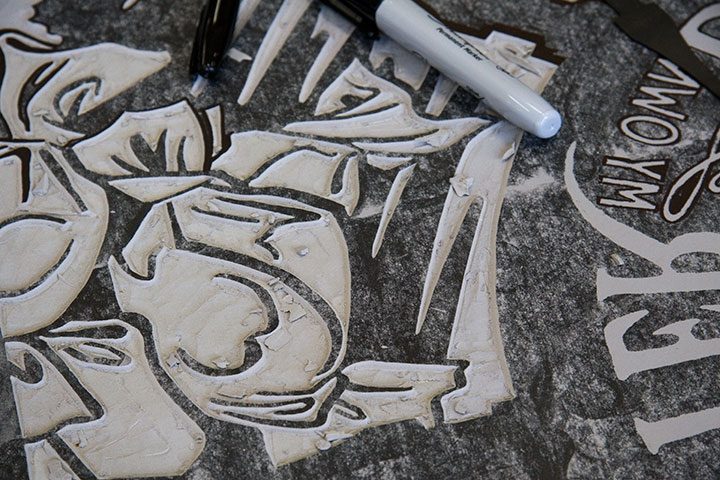
That’s right—Jessica and I are carving again. We’ve been invited by the good folks at the San Francisco Center for the Book (big shout-out to the amazing Rocket!) to be among the featured artist at their eighth-annual Roadworks festival this weekend! Needless to say, we’re super excited.
So if you’re in the Bay Area, swing on by the Potrero and check it out—it promises to be a real hootenanny. The party will be taking up a whole block, chock full of artist vendors, food carts, letterpress demos, and, of course, steamroller printing! And since these guys are rumored to be the original, no-kidding inventors of steamroller printing, they’ll show you how it’s done, for real. Here’s the scoop:
Roadworks 2011
Saturday, September 24
12 to 5 pm, Free!
Hosted by the San Francisco Center for the Book
Rhode Island Street, between 16th and 17th Streets
San Francisco, CA
As a bonus, stick around afterward for a gallery reception for the steamroller prints at 6 pm. There’ll be drinks, music, and a whole lot of loopy artists covered in ink.
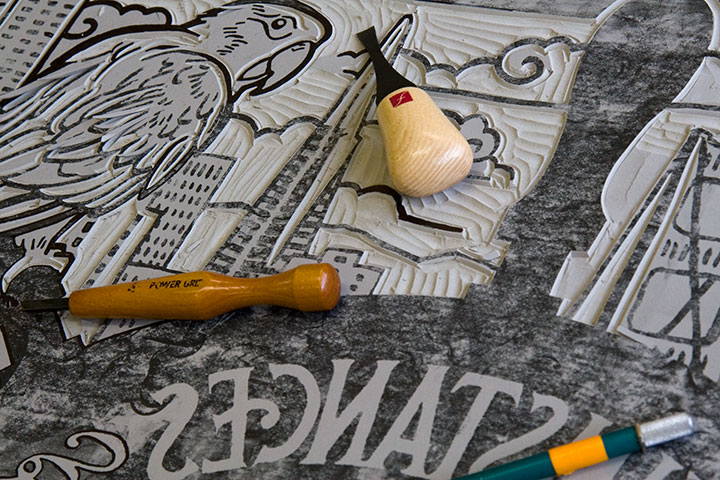
We’ve designed a brand-new, San Francisco-themed, honorary Dead Feminist for the occasion. I won’t reveal who she is until we get back, but here’s a hint: she knew her way around a fo’c’sle and a taffy pull equally well.
And of course, in honor of our muse, we’ll be sharing that salt water taffy at our table. It’s the good stuff, we promise. (Well, we had to sample it, didn’t we?)
See you in San Francisco!
June 30th, 2011
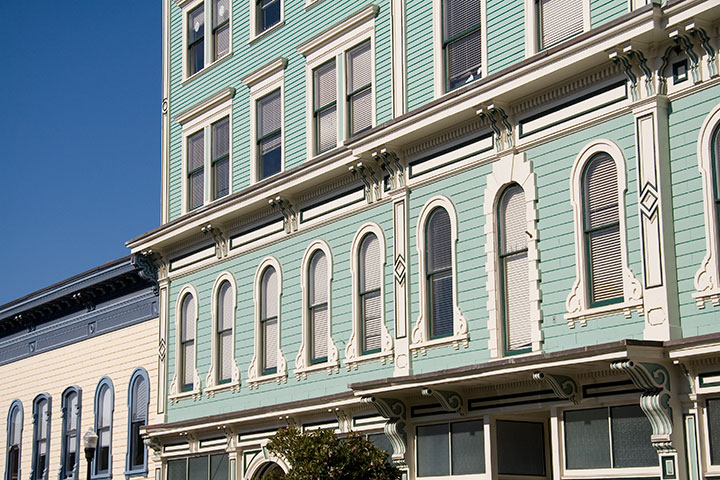
Eureka!
(Sorry. I just felt a great need to say that. Ahem.)
I stopped in Eureka, CA for a cuppa after my sojourn in the nearby redwoods, and was charmed in a heartbeat. Thanks to its obvious proximity to timber, Eureka is chock-a-block with fancy Victorian and Art Deco architecture. And by stumbling upon a book in a shop downtown that day, I discovered it’s not the only town on the Redwood coast that can make that claim. Since one of them was only a few miles back the way I’d come, I turned right around and headed back up the valley to Ferndale.
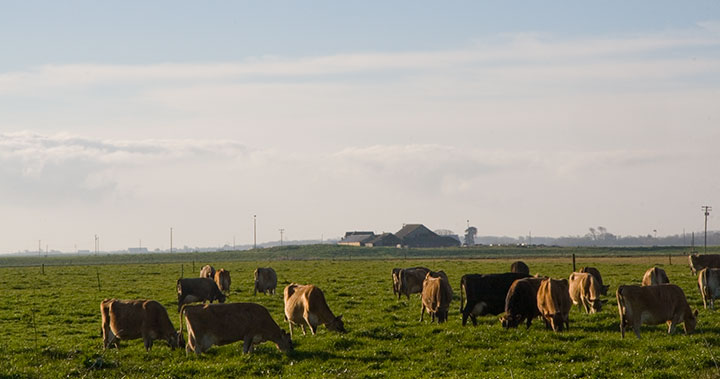
Nicknamed the “Cream City,” Ferndale had its heyday in the 1880s, when the area’s prosperous dairy farms provided much of the wealth that built the town. These affluent farmers built ornate and sumptuous homes there—which the locals called “Butterfat Palaces.”
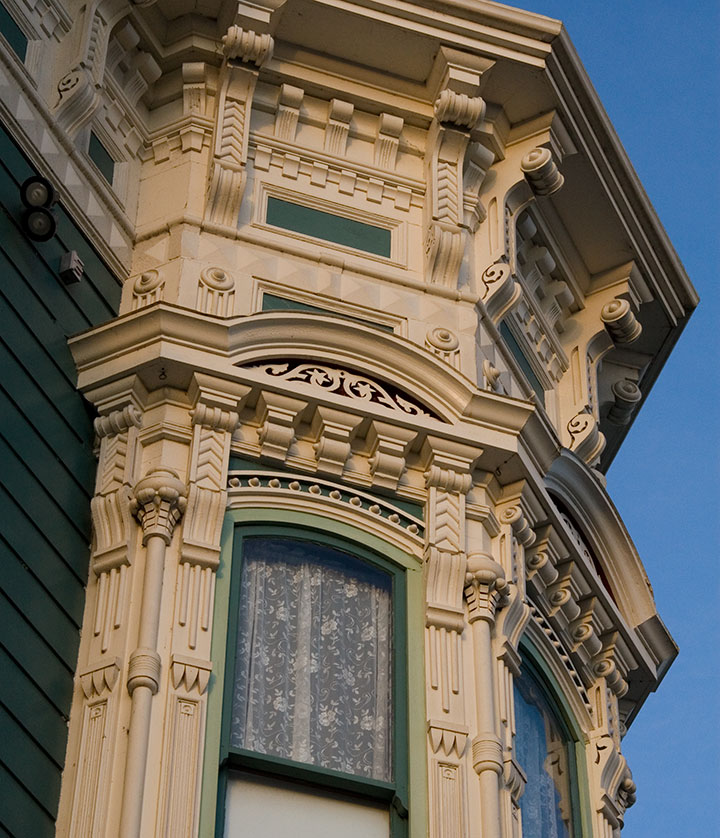
Right away I could see why—when I got to stay in one.
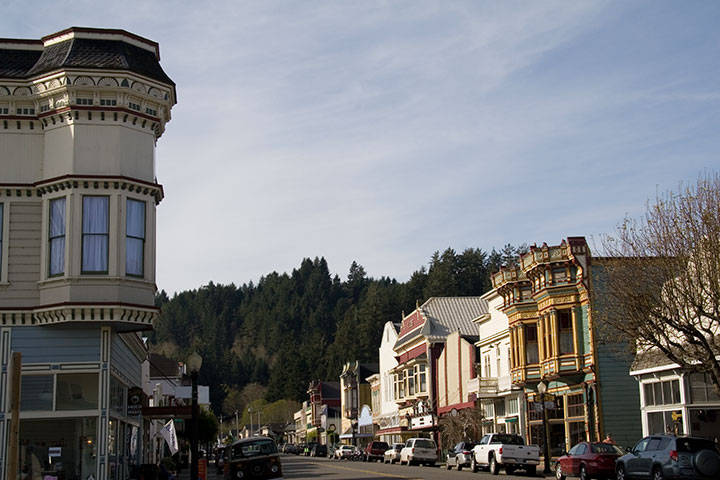
The next morning, after an early breakfast, I took a stroll around town.
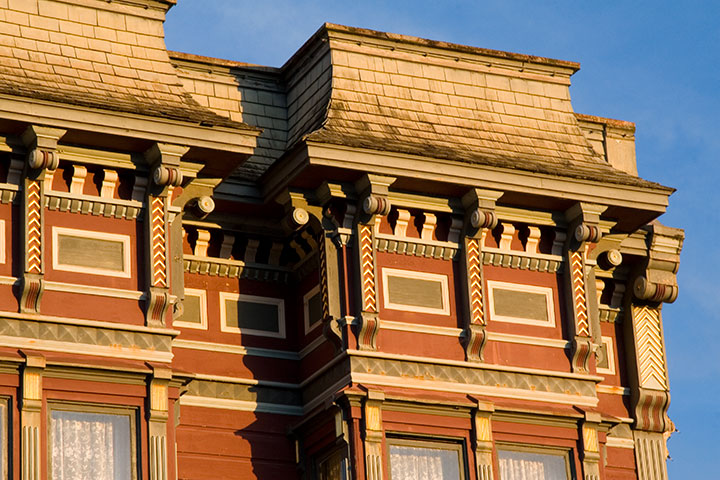
As seemed to be a running theme for my trip, I had the place to myself. The only sounds I heard were mourning doves and lowing cattle—and the early morning glow bathed the buildings in sunlight.
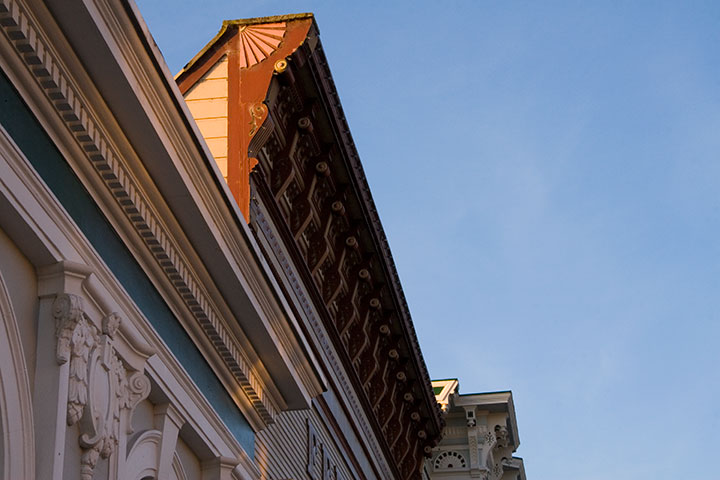
Ferndale is a tiny town; if you add up all its historic buildings you might get three or four city blocks. But the place is worth its weight in butter when it comes to the details.
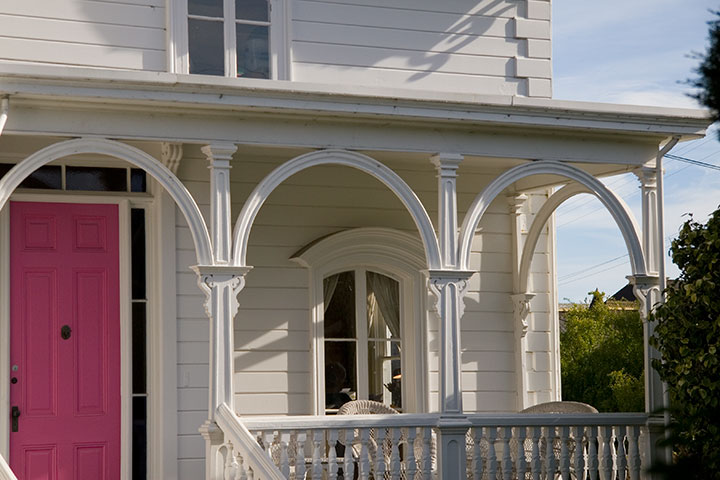
I mean, come on! Just look at that pink door! (I want a pink door on my house!)
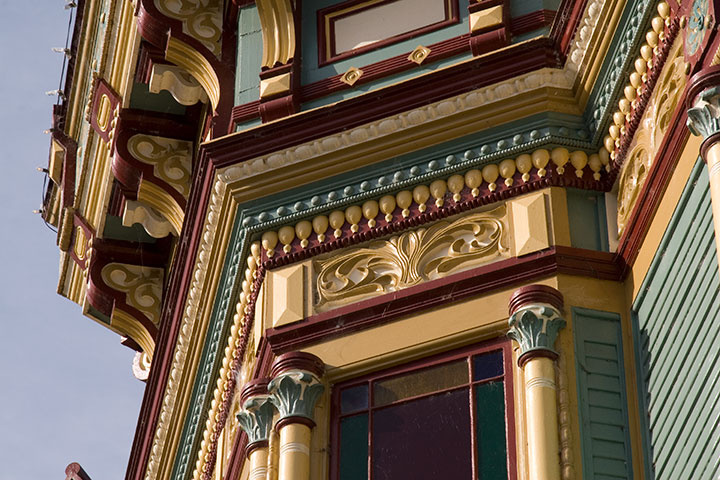
It’s the details that actually played a large part in saving the place from destruction and “urban renewal.” After a series of devastating floods in the mid-20th century, the buildings on main street were slated for demolition. That is, until a local resident bought up every threatened building, then painted them in outrageous Victorian colors—essentially creating the tourist draw the place enjoys today.
I probably could have stared at egg-and-dart cornices all day, but then I turned a corner, and stopped dead in my tracks.
But before I go on, I have to provide a little back story.
The Tailor and I have a tradition of putting together a jigsaw puzzle on New Year’s Day (riveting pastime, I know, but we love it)—we’re always raiding thrift stores in search of the next puzzle. This year’s was an image of an ornate victorian house, in some town I’d never heard of.
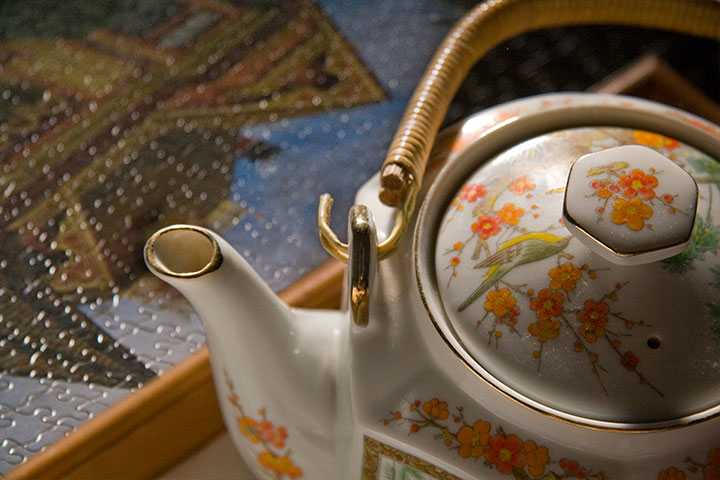
Well, when I turned that corner, I was absolutely gobsmacked to discover it was the jigsaw puzzle house!
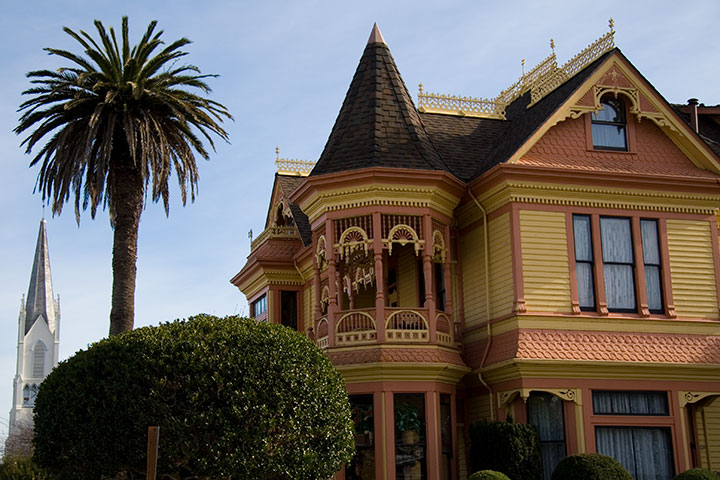
I knew I couldn’t possibly be mistaken—after all, when you reconstruct a building from 1000 pieces of cardboard, you start to memorize the details.
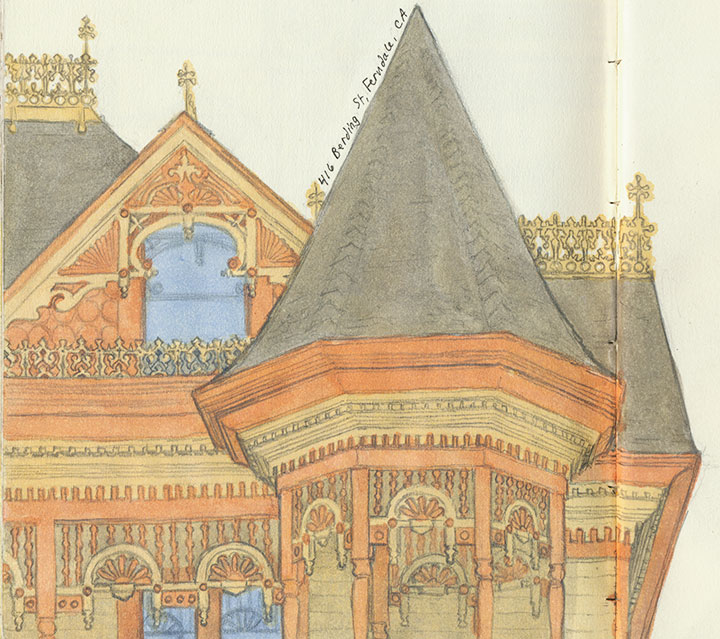
So I plonked myself down on the curb, and started jotting down some of those details in my sketchbook. After all—why settle for a jigsaw puzzle when I had the real thing before me?
June 24th, 2011
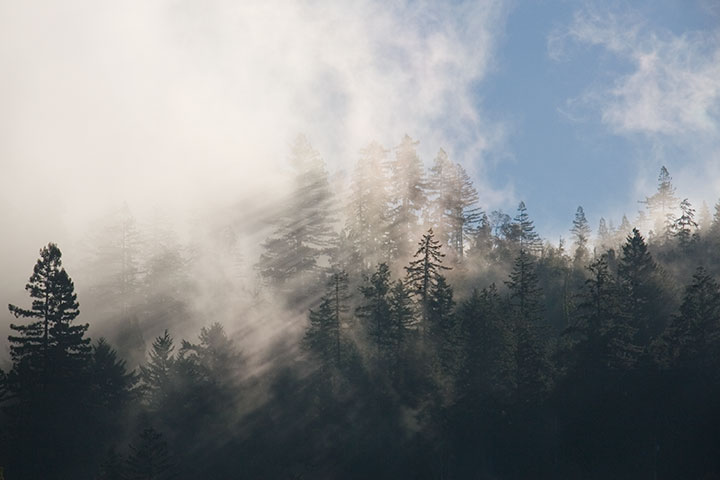
• • • • • • • • • • • • • • • • • • • • • • • • • • • • • • • • • • • • • • • • • • • • • • • • • • • • • • • • • • • • • • • • • • • • • • • • • • •
The tree is more than first a seed, then a stem, then a living trunk,
and then dead timber. The tree is a slow, enduring force straining
to win the sky.
—Antoine de Saint-Exupéry
• • • • • • • • • • • • • • • • • • • • • • • • • • • • • • • • • • • • • • • • • • • • • • • • • • • • • • • • • • • • • • • • • • • • • • • • • • •
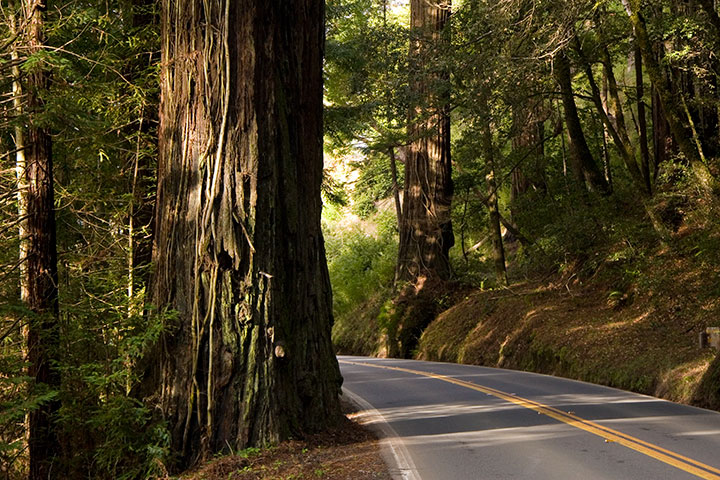
I’ve had four months now to mull over the experience of driving through a redwood forest in the early morning, in complete solitude and silence. And even now, there really are no words to describe it.
Thankfully, though, a redwood forest by its very nature makes it easy to ignore such things. Because my brain certainly wasn’t going to get a handle on what my eyes were seeing—nor was my camera.
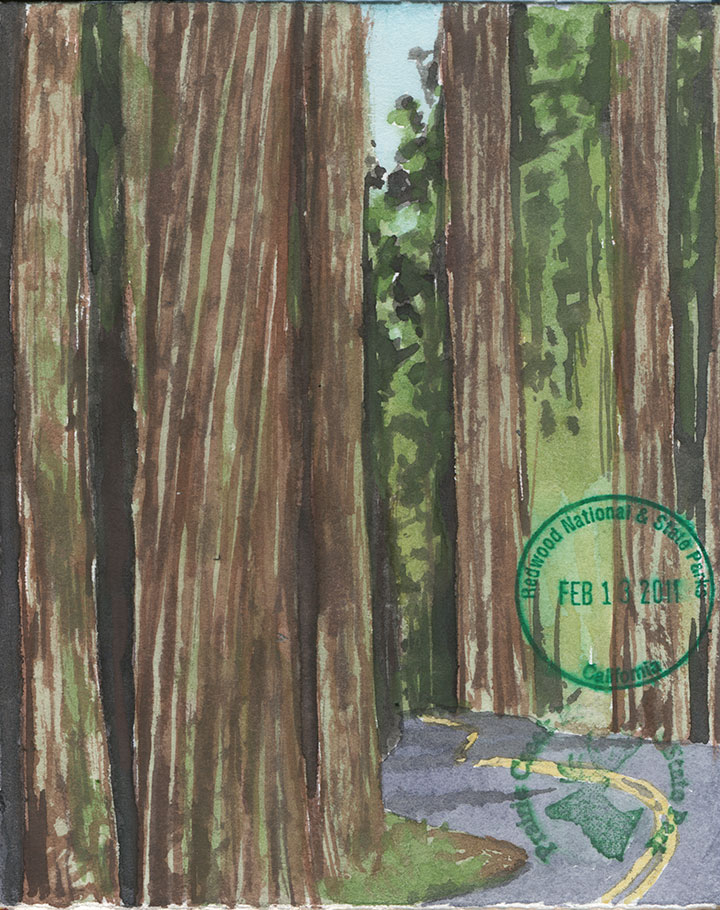
And neither, it turns out, was my paintbrush. I needed a sketchbook that was six inches wide by about twenty feet tall.
And then I realized that I needed a sense of scale, a point of reference. Enter the only other car I saw that morning, and my wide-angle lens.

Eh. That’s still not it.
The only thing to do is to go there in person, crane your neck, and gaze upward in wonder.

![Chandler O'Leary [logo]](https://chandleroleary.com/wp-content/themes/chandleroleary/images/logo.png)



















































































